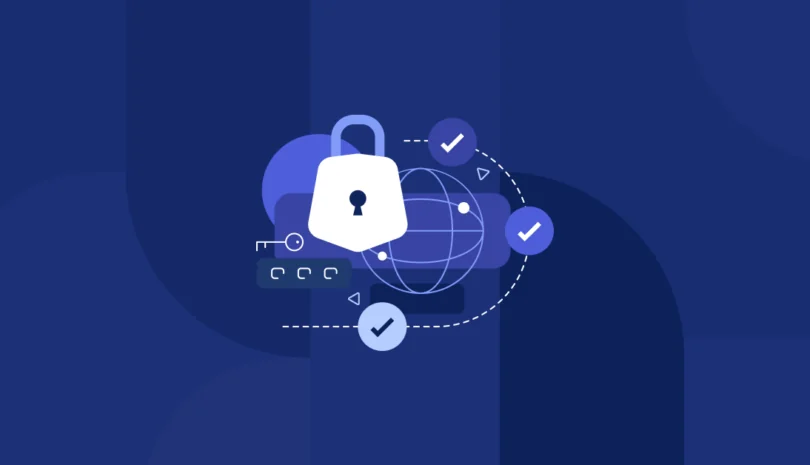A single cyber incident can grind financial operations to a halt, and regulators know it. That’s why the Monetary Authority of Singapore (MAS) developed the Technology Risk Management (TRM) Guidelines: a comprehensive playbook for building digital resilience in the financial sector.
The MAS TRM framework outlines how institutions should manage IT governance, secure their systems, respond to incidents, and vet third-party vendors. It’s not just for large banks or insurers; any organization operating in or serving Singapore’s financial ecosystem is expected to comply. And in an era of rising cyber threats and tightening regulatory standards, the cost of noncompliance is growing.
This guide is here to help. It’s written for compliance officers preparing for audits, IT leaders tasked with securing infrastructure, risk managers evaluating exposure, and vendors supporting financial institutions. If you’re new to MAS TRM or looking to strengthen your approach, this is your roadmap to understanding the essentials and getting ahead of the curve.
What Is MAS TRM?
The MAS Technology Risk Management (TRM) Guidelines are a set of regulatory best practices issued by the Monetary Authority of Singapore. First introduced in 2001 and most recently revised in January 2021, the guidelines are designed to help financial institutions safeguard their IT systems and operations against technology and cyber risks.
At their core, the MAS TRM Guidelines aim to ensure the confidentiality, integrity, and availability of critical systems and data. They set out principles and expectations around IT governance, cybersecurity, incident response, outsourcing, system development, and data protection. While the guidelines are not legally binding, MAS expects regulated entities to implement them proportionately based on the size, complexity, and risk profile of their operations.
As digital transformation accelerates in the financial sector, MAS TRM plays a critical role in strengthening cyber resilience. From fintech platforms to global banks, institutions operating in or with Singapore’s financial system must treat TRM compliance as a strategic priority, not just a checkbox. It’s a proactive approach to managing growing risks in an increasingly interconnected and digital financial landscape.
Core Pillars of MAS TRM
The MAS TRM Guidelines are built around several core focus areas that collectively support a resilient, secure, and well-governed technology environment. While each institution must tailor its implementation based on its size and risk profile, these pillars form the foundation of any effective TRM strategy.
- IT Governance. Effective risk management begins at the top. MAS emphasizes the need for strong IT governance, where boards and senior management are actively involved in overseeing technology risks. Institutions are expected to establish clear roles, responsibilities, and reporting lines, while aligning IT strategies with business objectives and regulatory expectations.
- Cybersecurity. Given the increasing sophistication of cyber threats, robust cybersecurity is a non-negotiable requirement. MAS expects financial institutions to implement layered defenses to prevent, detect, and respond to cyberattacks. This includes securing endpoints, managing access privileges, encrypting sensitive data, and maintaining real-time monitoring systems to identify anomalies or breaches.
- Incident Response and Recovery. Even with strong defenses, incidents will happen. The TRM Guidelines call for a structured incident response and recovery framework that enables institutions to respond swiftly to disruptions. This includes maintaining a formal response plan, regularly testing recovery procedures, and reporting material incidents to MAS within stipulated timeframes. Recovery objectives should be based on thorough business impact assessments.
- Third-Party Risk Management. In a highly interconnected ecosystem, third-party vendors pose significant technology and cybersecurity risks. MAS requires financial institutions to conduct thorough due diligence before engaging external service providers and to monitor them continuously. Contracts must include specific provisions for cybersecurity controls, performance metrics, and incident response obligations. Institutions remain ultimately responsible for the risks introduced by their vendors.
- System Development and Acquisition. Security must be integrated into the software development life cycle. MAS expects institutions to adopt secure coding practices, conduct risk assessments for new technologies, and ensure that systems are tested thoroughly before deployment. Whether developing in-house or acquiring third-party solutions, the focus should be on scalability, maintainability, and resilience.
- Data Protection and Confidentiality. With growing volumes of sensitive financial data being stored and processed, data protection is a central focus. Institutions must classify data based on sensitivity, apply appropriate access controls, encrypt information both in transit and at rest, and ensure that data handling practices comply with privacy regulations and MAS expectations.
- Penetration Testing and Vulnerability Assessment. To ensure controls are effective, institutions must proactively identify and address weaknesses. MAS recommends conducting regular penetration tests, especially after major system changes, and performing routine vulnerability assessments. These tests should be carried out by qualified, independent assessors and followed by timely remediation of identified issues.
Together, these pillars create a comprehensive framework for managing technology risk. By aligning with each focus area, financial institutions can build a more secure digital environment and demonstrate their commitment to MAS compliance.
MAS TRM and Third-Party Risk
Third-party vendors play a critical role in the operations of many financial institutions, but they also introduce unique risks. Under MAS TRM Guidelines, institutions are fully responsible for the technology and cybersecurity posture of their outsourced partners. That means vendors must meet the same standards of governance, protection, and resilience as internal systems and teams.
To achieve this, MAS expects financial institutions to perform rigorous due diligence before onboarding any third-party provider. This includes assessing their security practices, incident response capabilities, and business continuity measures. But compliance doesn’t stop at onboarding; ongoing monitoring is just as important. Institutions are expected to track vendor performance, review audit results, and reassess risk levels periodically.
Contracts and service-level agreements (SLAs) are another key area of focus. MAS recommends that institutions include specific clauses addressing data handling, access controls, breach notification timelines, and audit rights. Without these legal safeguards, even a well-chosen vendor can become a compliance liability. Aligning third-party management with MAS TRM is not just a best practice, it’s a regulatory expectation.
Steps to Achieve MAS TRM Compliance
Achieving compliance with the MAS TRM Guidelines requires a structured, proactive approach. While the guidelines are principles-based, MAS expects financial institutions to demonstrate clear evidence of implementation across governance, cybersecurity, incident response, and third-party risk.
The following six steps outline a practical roadmap to help organizations close gaps, align with regulatory expectations, and build long-term resilience. From conducting an initial gap analysis to maintaining detailed documentation, each step plays a vital role in strengthening your technology risk posture and preparing for audits or regulatory reviews.
Conduct a TRM gap analysis
Start by evaluating your existing IT risk management framework against the MAS TRM Guidelines. Identify where controls, policies, or procedures fall short, particularly in high-impact areas like cybersecurity, third-party oversight, and incident response. This gap analysis should cover both technical and governance-related domains. Once gaps are identified, prioritize remediation efforts based on risk severity and regulatory urgency. Addressing critical vulnerabilities first ensures compliance momentum while reducing exposure to cyber threats and operational disruptions. A well-documented gap analysis also serves as a foundation for future audits and ongoing TRM program improvements.
Establish IT governance aligned with MAS expectations
Strong governance is essential to effective technology risk management. Define clear roles and responsibilities for IT oversight at all organizational levels, including board and senior management accountability. Governance structures should support oversight of cybersecurity, data protection, operational resilience, and vendor relationships. Ensure that internal policies reflect MAS TRM principles and are reviewed regularly to stay current with emerging threats and regulatory updates. IT governance should also support performance monitoring, escalation procedures, and periodic board-level reporting on technology risk exposure.
Develop and test an incident response plan
A well-prepared incident response plan (IRP) is a cornerstone of MAS TRM compliance. Your IRP should outline procedures for detecting, reporting, containing, and recovering from cyber incidents, including defined roles and escalation paths. It’s not enough to have a plan on paper, testing is critical. Conduct regular tabletop exercises and simulations to validate response readiness and refine processes based on lessons learned. These exercises should reflect realistic threat scenarios and involve stakeholders across IT, compliance, and senior leadership. Effective response planning minimizes downtime and ensures compliance with MAS reporting obligations.
Perform regular security assessments (e.g., penetration testing)
Routine security assessments help identify vulnerabilities before attackers do. MAS recommends conducting penetration testing and vulnerability scans at least annually, as well as whenever there are significant system changes, such as software upgrades or infrastructure migrations. These assessments should be carried out by qualified, independent professionals to ensure objectivity. Post-assessment, institutions must prioritize and remediate issues based on severity and potential impact. Results should be documented, tracked, and used to improve your overall risk management posture. Regular testing demonstrates a proactive approach to cybersecurity and helps validate your control environment.
Implement robust vendor risk management processes
Your third-party providers must meet the same TRM standards you uphold internally. Begin by assessing vendors based on their access to sensitive data, critical systems, or operational functions. Require evidence of their cybersecurity, business continuity, and incident response capabilities. Contracts should include enforceable SLAs, audit rights, and breach notification requirements. Ongoing monitoring is equally important; establish review cycles, request attestation reports, and flag changes in risk posture. A mature vendor risk management program not only supports MAS compliance but also reduces the risk of cascading failures from external service providers.
Maintain documentation and audit trails for regulators
MAS places a strong emphasis on evidence-based compliance. Maintain detailed records of all TRM-related activities, including policies, risk assessments, vendor reviews, security tests, training sessions, and incident reports. These documents should be stored securely but remain easily accessible for internal audits or regulatory inspections. Establish version control, define document owners, and schedule periodic reviews to ensure relevance and accuracy. Robust documentation doesn’t just prove compliance, it also reinforces accountability, improves institutional memory, and supports continuous improvement in your TRM program.
Common Challenges and Mistakes
Even well-intentioned organizations can fall short of MAS TRM expectations if key risks are overlooked or underestimated. One of the most common pitfalls is failing to extend compliance efforts to third-party vendors. Institutions often assume that vendor-provided services are secure by default, but MAS expects the same level of scrutiny and control over external providers as internal systems.
Another frequent issue is inadequate logging and monitoring. Without real-time visibility into system activities, it’s difficult to detect threats, investigate incidents, or demonstrate compliance during audits. Similarly, many organizations invest heavily in security tools but neglect ongoing employee training. If staff don’t understand their roles in protecting data and responding to threats, even the best technology won’t be enough.
Finally, crisis response planning is often underdeveloped. Institutions may draft an incident response plan but fail to test it or adapt it to emerging threats. In a real-world attack, that gap can lead to delays, data loss, and regulatory breaches. Avoiding these common missteps requires a proactive, organization-wide commitment to continuous improvement and alignment with MAS TRM standards.
Tools and Resources to Help with MAS TRM Compliance
Navigating MAS TRM compliance is far more manageable when supported by the right tools and resources. The first and most essential resource is the official MAS TRM Guidelines, which outline the regulator’s expectations in detail. Institutions should also leverage checklists, templates, and implementation toolkits, many of which are available through industry associations or regulatory advisory firms.
Technology can significantly ease the burden of ongoing compliance. Compliance automation platforms help streamline documentation, incident tracking, and control testing. Third-party risk management (TPRM) software is especially critical for meeting MAS expectations around vendor oversight, due diligence, and continuous monitoring.
Panorays, for example, provides a purpose-built platform for automating third-party security risk assessments. It enables financial institutions to evaluate vendor compliance with MAS TRM standards through customizable questionnaires, external attack surface monitoring, and policy enforcement tools. By integrating Panorays into your TRM program, you can reduce manual work, improve visibility across your vendor ecosystem, and ensure your third parties are held to the same high standards as your internal teams. Book a personalized demo to see how Panorays automates third-party risk assessments, streamlines documentation, and supports your journey to MAS TRM compliance.
Getting Started with MAS TRM Compliance
When it comes to MAS TRM compliance, waiting until regulators come knocking is a risky strategy. Institutions that approach compliance reactively often face higher costs, operational disruptions, and reputational damage. The most effective approach is to embed MAS TRM principles early and treat compliaqnce as an ongoing process, not a one-time project.
Start by building awareness across your organization. Engage stakeholders from IT, compliance, legal, and business units to align on priorities and responsibilities. Conduct a gap analysis to understand where your current practices fall short, and develop a remediation roadmap tied to risk levels and business impact.
Just as threats evolve, so too must your controls. Continuous improvement is key to staying aligned with MAS expectations. This includes updating policies, refreshing training programs, re-evaluating vendors, and testing incident response plans regularly.
By taking a proactive stance, financial institutions not only reduce regulatory risk, they also strengthen their operational resilience, improve stakeholder trust, and position themselves as responsible, secure partners in Singapore’s financial ecosystem.
MAS TRM Compliance FAQs
-
MAS TRM Guidelines apply to all financial institutions regulated by the Monetary Authority of Singapore. This includes banks, insurance companies, capital markets service providers, payment services firms, and licensed fintech entities. Even organizations outside Singapore that serve local financial institutions may be held to similar standards, especially in vendor or outsourcing relationships.
-
The guidelines are not legally binding in the same way as statutory regulations. However, MAS expects regulated entities to adopt the TRM principles in proportion to their risk profile. During inspections or audits, MAS will assess whether institutions have appropriately implemented the guidelines. Failure to comply can lead to supervisory actions, penalties, or reputational harm.
-
Institutions are expected to conduct penetration testing at least once a year or whenever there are significant changes to their IT environment. Testing should be carried out by qualified and independent assessors to ensure objectivity. Results must be documented, and any vulnerabilities should be promptly addressed.
-
MAS expects institutions to maintain detailed records of all TRM activities. This includes policies, risk assessments, training logs, vendor reviews, incident reports, penetration test results, and board-level communications related to technology risk.



